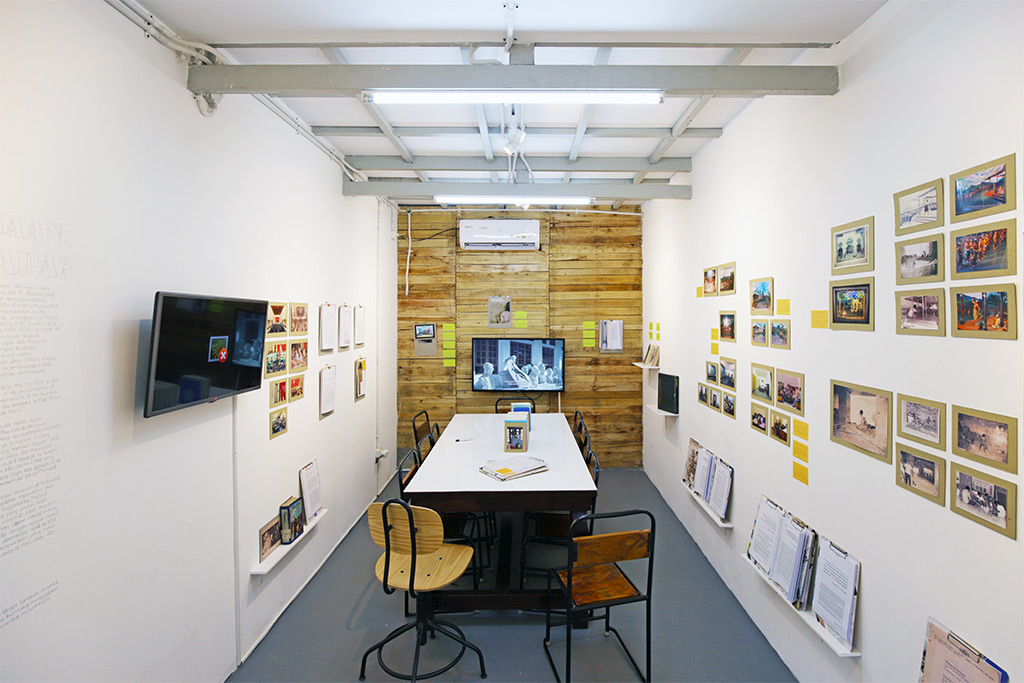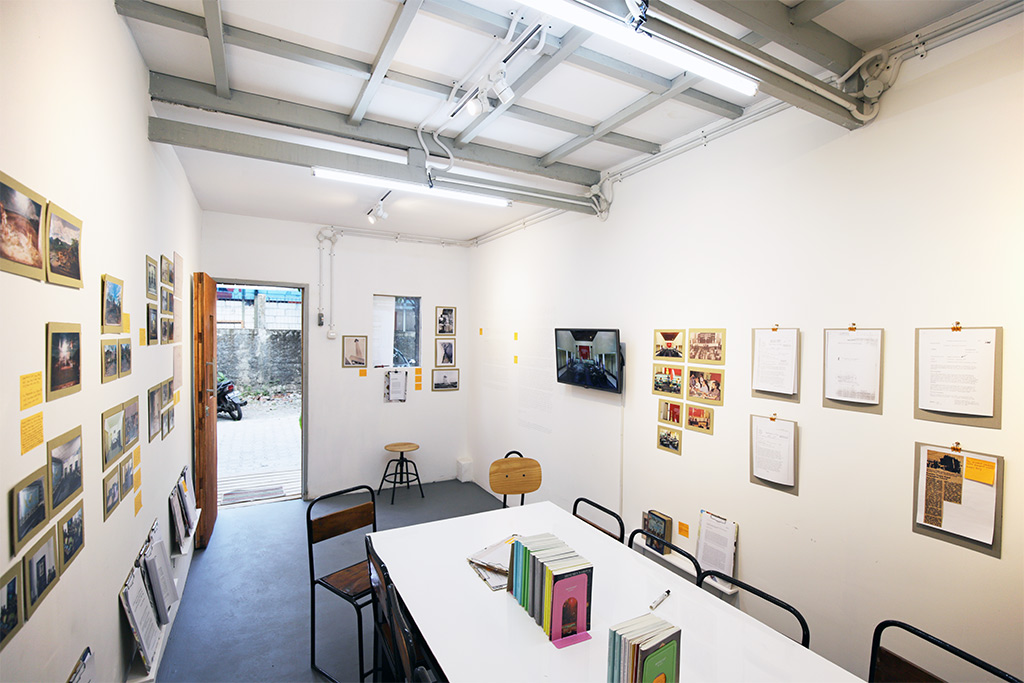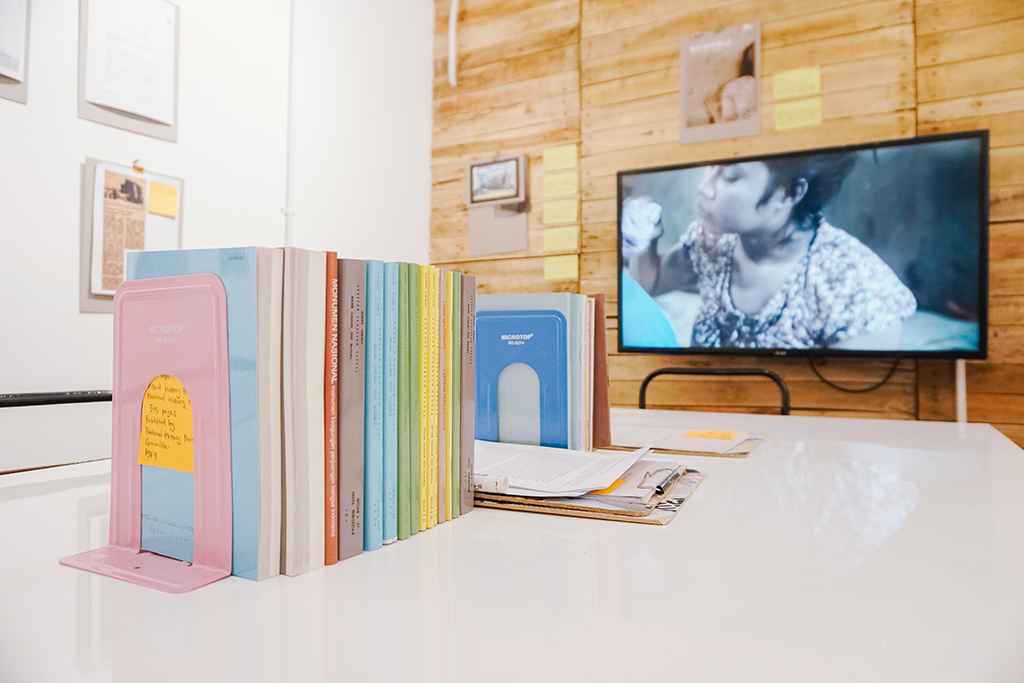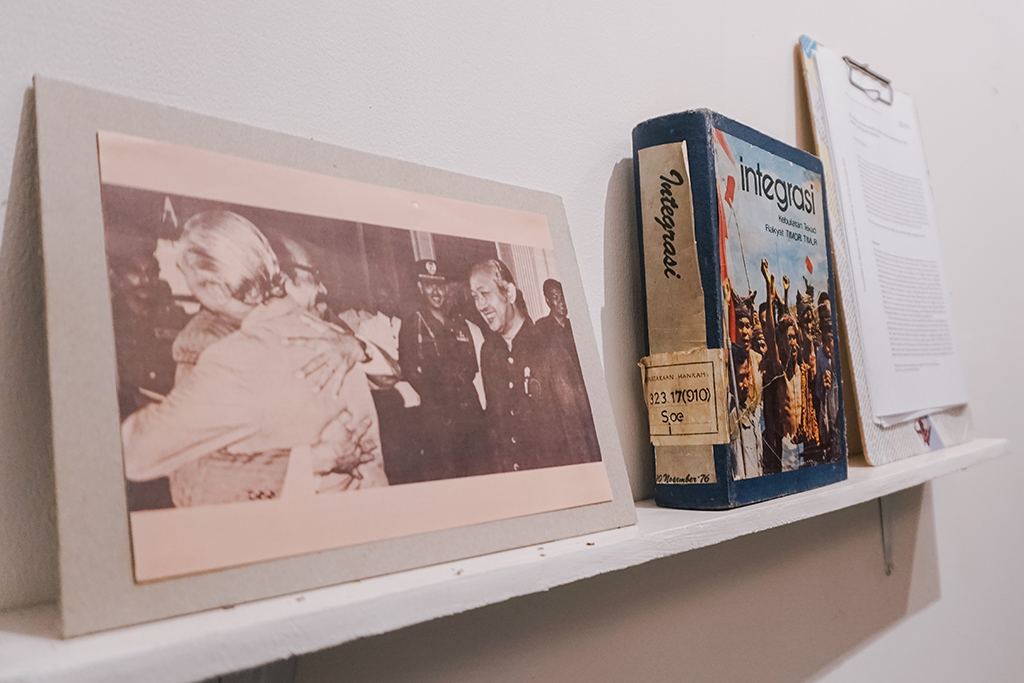
“From, by and for whom?” To address this question, ruangrupa and curator Grace Samboh (Hyphen —) teamed up for SEAM Encounters. The archive exhibition at Gudskul provides the spatial anchor for the project to conduct a seminar series with workshops and public talks as well as various excursions.
The study focuses on the dioramas of the Indonesian artist Edhi Sunarso, which you can find in several museums and monuments throughout the country. Sukarno, the first president of the independent Republic of Indonesia, commissioned him to develop hundreds of dioramas in order to tell and consolidate the Indonesian history in public. The focus of the investigation is thus less on the modernist buildings themselves, which were created as an expression of independence, but rather on the contents that can be seen in the buildings.

Edhi Sunarso’s dioramas served for the historical and political education of a broad public and they were designed for major monuments and museums, which to this day are visited by a multitude of school classes, families, and tourists from Indonesia and abroad. Indeed, the construction of the historical identity of a nation that unites so many cultures, differences, and conflicts between the newly conglomerated parts of the archipelago is highly problematic. After Suharto took power, the work of Edhi Sunarso was further appropriated to strengthen the interests of the military leadership. The government scripted the historical moments narrated in the dioramas and the facts were manipulated to serve the agenda of the government.
The complex investigation carried out in the project Visualization of the National History: From, by, and for whom? is based on an extensive collection of original archive material provided by Edhi Sunarso himself, collected and digitized by Hyphen—, an artist initiative which Grace Samboh is a part of. These materials are presented in the Gudskul project space in the form of an archive exhibition to provide a foundation for further research by the participating students, scholars, and artists.


Historical photos from various decades show Sunarso’s creative process of design, but also the (intentional or unintentional) changes in the arrangements of the dioramas over time. A series of booklets containing the scripts and instructions formulated by historians and military leaders for the design of the dioramas demonstrate the political manipulation of the illustrated narratives. Historical documents, secret service instructions, and public reports disprove the “official” narratives expressed by the dioramas. The few publications dealing with the subject make connections to other political events in Indonesia, such as the persecution of the communists, the student protests, and the annexation of Timor-Leste.
Current films by contemporary artists deepen the political contradictions that can be found in the dioramas. For example, Kamila Andindi’s film Memoria deals with the mass rape by Indonesian soldiers in Timor-Leste. Tom Nicholson’s work deals with the burning of libraries during this conflict and relates it to the book burning memorial at Bebelplatz in Berlin. Even though Indonesia is almost halfway around the earth from Germany, in these events one can find parallels between the two countries’ histories.








